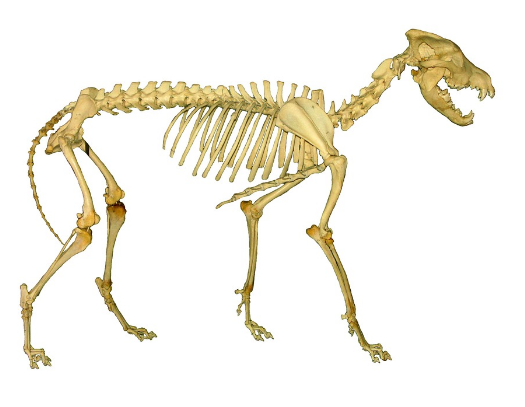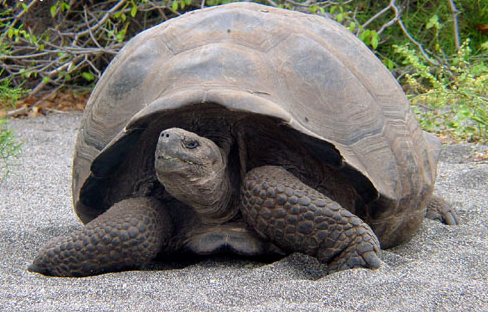What Is An Endoskeleton?

An endoskeleton is a skeleton found within the interior of the body and therefore it provides structural support and support for the internal organs and tissues of an organism. An endoskeleton occurs in chordates including all the vertebrates. The endoskeleton of chordates develops from mesoderm tissue during embryonic development. The vertebrate endoskeleton is made of cartilage and bone tissue. Endoskeletons can take several forms and can differ in complexity, shape and function depending on the type of human.
What You Need To Know About Endoskeleton (Characteristics)
- Endoskeleton is an internal skeleton such as the bony or cartilaginous skeleton of vertebrates.
- The endoskeleton develops from mesodermal tissue during embryonic development. The endoskeleton usually develops into cartilage and bone.
- An endoskeleton is located inside of the body of an animal.
- An endoskeleton enables movement by providing bony surfaces for muscle attachment. Usually, skeletal muscles attach to bones by tendons.
- An endoskeleton is usually stronger and provides more protection from physical force than an exoskeleton.
- Endoskeleton is made up of calcium and phosphorous.
- Endoskeleton is found in vertebrates.
- Endoskeleton is a living structure.
- Endoskeleton develops from the endoderm.
- Endoskeleton grows as the body grows.
- It is more flexible.
- An endoskeleton enables movement by muscles pulling on bones.
- Vertebrate endoskeleton takes a long time to heal with cartilage and then bone being deposited.
- An endoskeleton has blood capillaries for blood supply.
- An endoskeleton can support a large body size.
What Is An Exoskeleton?

An exoskeleton is a skeleton that develops on the outside of the body of an animal. The exoskeleton provides support for all the internal organs and tissues of the animal. The exoskeleton of invertebrates is formed from various proteins, carbohydrates or minerals. The arthropod exoskeleton develops when chitin is deposited and combined with protein. The exoskeleton is often flexible and light in weight a factor which enables animals to easily move.
The exoskeleton can easily be replaced since the animal molts, during which time it sheds the old exoskeleton and deposits a new one. In the case of shells, new layers can be deposited.
What You Need To Know About Exoskeleton (Characteristics)
- Exoskeleton refers to an external skeleton such as the chitinous skeleton in arthropods.
- The exoskeleton of invertebrates is formed from various proteins, carbohydrates or minerals. The molluscan exoskeletons consist of calcium carbonate shells that the animal deposits whereas arthropod exoskeleton develops when chitin is deposited and combined with protein.
- An exoskeleton is located on the outside of the body of an animal.
- Exoskeleton provides support for all the internal organs and tissues of the animal.
- An exoskeleton is usually less strong.
- Exoskeleton is made up of scales, chitinous cuticle or calcified shells.
- Endoskeleton is found in arthropods and some mollusks.
- Exoskeleton is a non-living structure.
- Exoskeleton develops from the ectoderm.
- Exoskeleton does not grow with the body, it just shades over time.
- It is less flexible.
- An exoskeleton enables movement by having membranous joints between appendages.
- An exoskeleton can be replaced quite quickly with chitin, protein or calcium carbonate being deposited.
- An exoskeleton does not have blood capillaries for blood supply.
- Endoskeleton cannot support a large body size.
Difference Between Endoskeleton And Exoskeleton In Tabular Form
| BASIS OF COMPARISON | ENDOSKELETON | EXOSKELETON |
| Description | Endoskeleton is an internal skeleton such as the bony or cartilaginous skeleton of vertebrates. | Exoskeleton refers to an external skeleton such as the chitinous skeleton in arthropods. |
| Formation | It develops from mesodermal tissue during embryonic development. The endoskeleton usually develops into cartilage and bone. | The exoskeleton of invertebrates is formed from various proteins, carbohydrates or minerals. |
| Location | It is located inside of the body of an animal. | It is located on the outside of the body of an animal. |
| Function | It enables movement by providing bony surfaces for muscle attachment. Usually, skeletal muscles attach to bones by tendons. | It provides support for all the internal organs and tissues of the animal. |
| Strength | It is usually stronger and provides more protection from physical force than an exoskeleton. | It is usually less strong. |
| Constituents | It is made up of calcium and phosphorous. | It is made up of scales, chitinous cuticle or calcified shells. |
| Presence | It is found in vertebrates. | It is found in arthropods and some mollusks. |
| Nature | It is a living structure. | It is a non-living structure. |
| Development | It develops from the endoderm. | It develops from the ectoderm. |
| Growth | It grows as the body grows. | It does not grow with the body, it just shades over time. |
| Flexibility | It is more flexible. | It is less flexible. |
| Movement | It enables movement by muscles pulling on bones. | It enables movement by having membranous joints between appendages. |
| Replacement | Vertebrate endoskeleton takes a long time to heal with cartilage and then bone being deposited. | It can be replaced quite quickly with chitin, protein or calcium carbonate being deposited. |
| Blood Capillaries | It has blood capillaries for blood supply. | It does not have blood capillaries for blood supply. |
| Capability | It can support a large body size. | It cannot support a large body size. |
What Are Some Of The Similarities Between Endoskeleton And Exoskeleton?
- Both endoskeleton and exoskeleton provide structural support.
- Both support movement and protect internal organs.
- They are both types of hard structures in animals.
- They both allow areas for muscle attachment.